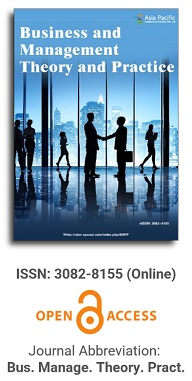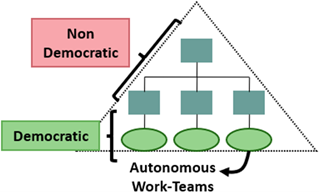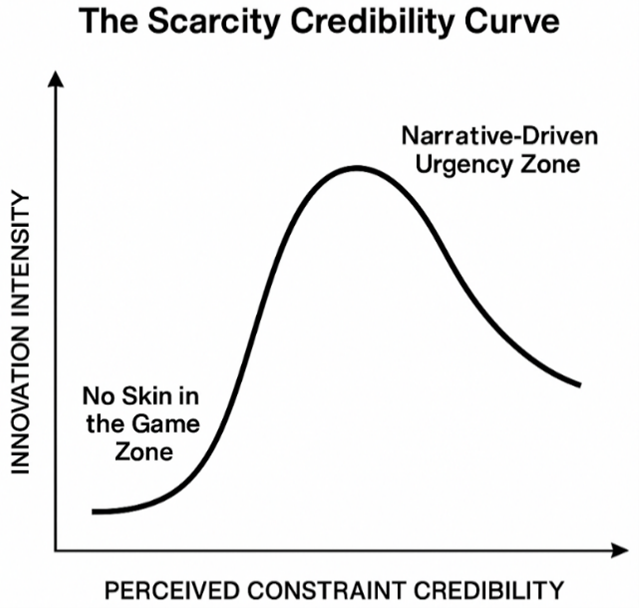
Asia Pacific Academy of Science Pte. Ltd. (APACSCI) specializes in international journal publishing. APACSCI adopts the open access publishing model and provides an important communication bridge for academic groups whose interest fields include engineering, technology, medicine, computer, mathematics, agriculture and forestry, and environment.


Quantile regression analysis of economic indicators’ impact on employment across G7 countries
Vol 2, Issue 3, 2025
Download PDF
Abstract
This study investigates the intricate relationship between pivotal economic indicators and employment outcomes across various quantiles of the employment distribution within G7 nations, with the objective of elucidating the heterogeneous impacts of these factors on employment. Employing quantile regression analysis, the research assesses the effects of GDP growth, Foreign Direct Investment (FDI), inflation, interest rates, Research and Development (R&D), and trade on employment at distinct quantiles (0.05, 0.25, 0.50, 0.75, and 0.90) of the employment spectrum. This methodological approach allows for a deeper understanding of how these economic determinants exert differential influences across both high-wage and low-wage sectors. The findings reveal that GDP, FDI, and R&D significantly stimulate job creation, especially within high-employment sectors, whereas the effects of inflation and interest rates are more nuanced, benefiting low-employment sectors in some instances but adversely impacting high-employment sectors due to rising costs and reduced investment. Unemployment consistently diminishes job opportunities across all employment quantiles, with its most pronounced effects felt in low-employment sectors. This study makes a novel contribution to the existing literature by utilizing quantile regression to provide a more granular understanding of how economic variables influence labor market outcomes across diverse segments. It underscores the necessity for targeted economic policies designed to address the specific needs of both high- and low-employment sectors, offering critical insights for policymakers aiming to cultivate inclusive and resilient labor markets.
Keywords
References
1. Gábos A, Binder B, Branyiczki R, et al. Unravelling the relationship between employment, social transfers and income poverty: Policy and measurement. Journal of European Social Policy. 2024; 34(3): 289-308. doi: 10.1177/09589287241232272
2. Bakker V, van Vliet O. Social investment, employment and policy and institutional complementarities: A comparative analysis across 26 OECD countries. Journal of Social Policy. 2021; 51(4): 728-750. doi: 10.1017/s0047279421000386
3. Yasmeen R, Tian T, Yan H, et al. A simultaneous impact of digital economy, environment technology, business activity on environment and economic growth in G7: Moderating role of institutions. Heliyon. 2024; 10(12): e32932. doi: 10.1016/j.heliyon.2024.e32932
4. Huihui W, Alharthi M, Ozturk I, et al. A strategy for the promotion of renewable energy for cleaner production in G7 economies: By means of economic and institutional progress. Journal of Cleaner Production. 2024; 434: 140323. doi: 10.1016/j.jclepro.2023.140323
5. Ma B, Wang X. Unveiling asymmetric dynamics: Exploring the impact of oil price on economic growth and current account deficit: Evidence from G-7 countries. Resources Policy. 2024; 89: 104481. doi: 10.1016/j.resourpol.2023.104481
6. Mingyang Y, Hankun Y, Chen X, et al. The impact of trade on employment: New evidence from a global value chains perspective. Jayathilaka R, ed. PLOS ONE. 2023; 18(9): e0285681. doi: 10.1371/journal.pone.0285681
7. Pinheiro A, Sochirca E, Afonso O, et al. Automation and off(re)shoring: A meta-regression analysis. International Journal of Production Economics. 2023; 264: 108980. doi: 10.1016/j.ijpe.2023.108980
8. Naz A. Linkages between different types of globalization and socio-economic variables: Panel data analysis for 129 countries. Journal of Economic Structures. 2023; 12(1). doi: 10.1186/s40008-023-00301-2
9. Dang TT, Oanh TTK, Thanh HL, et al. Impacts of foreign direct investment on economic development: Does institutional quality matter? Emerging Science Journal. 2023; 7(6): 1924-1936. doi: 10.28991/esj-2023-07-06-05
10. Cloyne J, Ferreira C, Froemel M, et al. Monetary policy, corporate finance, and investment. Journal of the European Economic Association. 2023; 21(6): 2586-2634. doi: 10.1093/jeea/jvad009
11. İnal V. On the relationship between the money rate of interest and aggregate investment spending. Review of Radical Political Economics. 2023; 56(2): 300-318. doi: 10.1177/04866134231207912
12. Díaz Pavez LR, Martínez‐Zarzoso I. The impact of automation on labour market outcomes in emerging countries. The World Economy. 2023; 47(1): 298-331. doi: 10.1111/twec.13523
13. Stemmler H. Automated deindustrialization: How global robotization affects emerging economies—Evidence from Brazil. World Development. 2023; 171: 106349. doi: 10.1016/j.worlddev.2023.106349
14. Mason A, Lee R. Six ways population change will affect the global economy. Population and Development Review. 2022; 48(1): 51-73. doi: 10.1111/padr.12469
15. Su Z, Bentley BL, McDonnell D, et al. Senior employment technology: Leveraging opportunities in population ageing. Health Policy and Technology. 2024; 13(3): 100883. doi: 10.1016/j.hlpt.2024.100883
16. Mito HRB, Qi L, Akter M. Social enterprises transformation and its effects on socio-economic development in developed and developing countries. Sustainable Social Development. 2024; 2(4): 2813. doi: 10.54517/ssd.v2i4.2813
17. Gao W, Wei S, Geng C, et al. The role of the real estate sector in the economy: Cross-national disparities and their determinants. Sustainability. 2024; 16(17): 7697. doi: 10.3390/su16177697
18. Pivetti M. A note on the real effects of interest rate policy and its impact on inflation. Review of Political Economy. 2023; 36(2): 600-609. doi: 10.1080/09538259.2023.2238997
19. Dalton M, Groen JA, Loewenstein MA, et al. The K-shaped recovery: Examining the diverging fortunes of workers in the recovery from the COVID-19 pandemic using business and household survey microdata. The Journal of Economic Inequality. 2021; 19: 527-550. doi: 10.1007/s10888-021-09506-6
20. Lin L, Li Q, Li J, et al. Industry volatility and employment extreme risk transmission: Evidence from China. Sustainability. 2023; 15(17): 12916. doi: 10.3390/su151712916
21. Qi M, Cao Y, Shen ZJ (Max). Distributionally robust conditional quantile prediction with fixed design. Management Science. 2022; 68(3): 1639-1658. doi: 10.1287/mnsc.2020.3903
22. Nguyen HT, Le ANN, Le HV, et al. Foreign direct investment and employments in Asia Pacific nations: The moderating role of labor quality. Heliyon. 2024; 10(9): e30133. doi: 10.1016/j.heliyon.2024.e30133
23. Bouattour A, Kalai M, Helali K. The nonlinear impact of technologies import on industrial employment: A panel threshold regression approach. Heliyon. 2023; 9(10): e20266. doi: 10.1016/j.heliyon.2023.e20266
24. Xu R, Gao J, Oka T, et al. Quantile random-coefficient regression with interactive fixed effects: Heterogeneous group-level policy evaluation. Econometric Reviews. 2024; 44(5): 630-648. doi: 10.1080/07474938.2024.2433688
25. Ross AG, McGregor PG, Swales JK. Labour market dynamics in the era of technological advancements: The system-wide impacts of labour augmenting technological change. Technology in Society. 2024; 77: 102539. doi: 10.1016/j.techsoc.2024.102539
26. Ahonen EQ, Winkler MR, Bosmans K, et al. Could better-quality employment improve population health? Findings from a scoping review of multi-dimensional employment quality research and a proposed research direction. American Journal of Industrial Medicine. 2025; 68(3): 225-249. doi: 10.1002/ajim.23695
27. Ahmad M, Kuldasheva Z, Ismailova N, et al. Effect of the supply-side factors on inflation in South Asia: An analysis of oil price, technology, and labor market dynamics. Research in Globalization. 2024; 8: 100210. doi: 10.1016/j.resglo.2024.100210
28. Ahmed R, Chen XH, Kumpamool C, et al. Inflation, oil prices, and economic activity in recent crisis: Evidence from the UK. Energy Economics. 2023; 126: 106918. doi: 10.1016/j.eneco.2023.106918
29. Haider A, Jabeen S, Rankaduwa W, et al. The nexus between employment and economic growth: A cross-country analysis. Sustainability. 2023; 15(15): 11955. doi: 10.3390/su151511955
30. Hanna R, Heptonstall P, Gross R. Job creation in a low carbon transition to renewables and energy efficiency: A review of international evidence. Sustainability Science. 2024; 19(1): 125-150. doi: 10.1007/s11625-023-01440-y
31. Ben Belgacem S, Younsi M, Bechtini M, et al. Do financial development, institutional quality and natural resources matter the outward FDI of G7 countries? A panel gravity model approach. Sustainability. 2024; 16(6): 2237. doi: 10.3390/su16062237
32. Katitas A, Pandya S. Investment incentives attract foreign direct investment: Evidence from the great recession. Public Choice. 2024; 200(1-2): 323-345. doi: 10.1007/s11127-024-01158-0
33. Wang S, Zhao C. Effects of expanding imports on urban manufacturing employment: Evidence from China. Peng J, ed. PLOS ONE. 2024; 19(1): e0296961. doi: 10.1371/journal.pone.0296961
34. Liang Y. Job creation and job destruction: The effect of trade shocks on U.S. manufacturing employment. The World Economy. 2021; 44(10): 2909-2949. doi: 10.1111/twec.13111
35. Cubrich M. On the frontlines: Protecting low-wage workers during COVID-19. Psychological Trauma: Theory, Research, Practice, and Policy. 2020; 12(S1): S186-S187. doi: 10.1037/tra0000721
36. Godoey A, Reich M. Are minimum wage effects greater in low-wage areas? Industrial Relations: A Journal of Economy and Society. 2021; 60(1): 36-83. doi: 10.1111/irel.12267
37. Wang Z, Liu X, Tang W, et al. Incorporating graphical structure of predictors in sparse quantile regression. Journal of Business & Economic Statistics. 2020; 39(3): 783-792. doi: 10.1080/07350015.2020.1730859
38. Moridian A, Radulescu M, Kumar P, et al. New insights on immigration, fiscal policy and unemployment rate in EU countries—A quantile regression approach. Heliyon. 2024; 10(13): e33519. doi: 10.1016/j.heliyon.2024.e33519
39. Eckstein Z, Setty O, Weiss D. Financial risk and unemployment. International Economic Review. 2018; 60(2): 475-516. doi: 10.1111/iere.12360
40. Acharya S, Bengui J, Dogra K, et al. Slow recoveries and unemployment traps: Monetary policy in a time of hysteresis*. The Economic Journal. 2022; 132(646): 2007-2047. doi: 10.1093/ej/ueac016
41. Biewen M, Sturm M. Why a labour market boom does not necessarily bring down inequality: Putting together Germany’s inequality puzzle. Fiscal Studies. 2022; 43(2): 121-149. doi: 10.1111/1475-5890.12294
42. Fadinger H, Herkenhoff P, Schymik J. Quantifying the Germany shock: Structural labor-market reforms and spillovers in a currency union. Journal of International Economics. 2024; 150: 103905. doi: 10.1016/j.jinteco.2024.103905
43. Qi L, Mito HRB, Akter M. Social enterprise transformation and its effects on socio-economic development: A comparative case study of developed and developing countries. Journal of the Knowledge Economy. 2024; 16(1): 1307-1326. doi: 10.1007/s13132-024-02042-4
44. Bernardi M, Casarin R, Maillet BB, et al. Bayesian dynamic quantile model averaging. In: Annals of Operations Research. Springer; 2024.
45. Ge Z, Sun Y. Asymmetric impact of oil price shocks on inflation: Evidence from quantile-on-quantile regression. International Review of Financial Analysis. 2024; 92: 103097. doi: 10.1016/j.irfa.2024.103097
46. Buera FJ, Kaboski JP, Rogerson R, et al. Skill-biased structural change. The Review of Economic Studies. 2021; 89(2): 592-625. doi: 10.1093/restud/rdab035
47. Qi L, Mito HRB, Akter M. Effects of access to formal finance to the MSMEs on sustainable employment generation in Bangladesh. North American Academic Research (NAAR) Journal. 2021; 4(10): 238-256.
48. Wu J, Zahoor N, Khan Z, et al. The effects of inward FDI communities on the research and development intensity of emerging market locally domiciled firms: Partial foreign ownership as a contingency. Journal of Business Research. 2023; 156: 113487. doi: 10.1016/j.jbusres.2022.113487
49. Le HTP, Pham H, Do NTT, et al. Foreign direct investment, total factor productivity, and economic growth: Evidence in middle-income countries. Humanities and Social Sciences Communications. 2024; 11(1). doi: 10.1057/s41599-024-03462-y
50. Driffield N, Harrington L (Richard), Surdu I, et al. Maximising the (unequal) benefits of foreign direct investment: Addressing the two-speed problem. Contemporary Social Science. 2024; 19(4): 469-494. doi: 10.1080/21582041.2024.2433670
51. Ni B, Kato H, Liu Y. Does it matter where you invest? The impact of foreign direct investments on domestic job creation and destruction. The World Economy. 2022; 46(1): 135-152. doi: 10.1111/twec.13297
52. Acharya V, Plantin G. Monetary easing, leveraged payouts, and lack of investment. Management Science. 2025. doi: 10.1287/mnsc.2022.01440
53. Bindra R, Pandey A, Misra P, et al. Revisiting the interest rate-investment nexus in India: Fresh perspective from non-parametric analysis. Journal of Economic Studies. 2024; 52(3): 518-531. doi: 10.1108/jes-12-2023-0736
54. Ortega-Argilés R, Piva M, Vivarelli M. The productivity impact of R&D investment: Are high-tech sectors still ahead? Economics of Innovation and New Technology. 2014; 24(3): 204-222. doi: 10.1080/10438599.2014.918440
55. Santoleri P. Innovation and job creation in (high-growth) new firms. Industrial and Corporate Change. 2019; 29(3): 731-756. doi: 10.1093/icc/dtz059
56. Muñoz Navia F, López Giral D. Liberalization of services and their incorporation into the manufacturing industry (Spanish). World Economic Review. 2020; (57). doi: 10.33776/rem.v0i57.4591
57. You C, Qiu H, Pi Z, et al. Sustainable enterprise development in the manufacturing sector: Flexible employment and innovation in China. Sustainability. 2023; 15(10): 8180. doi: 10.3390/su15108180
58. Nurillaev K, Hiwatari M. Innovation and employment growth in developing countries: The role of market structure. Economics of Innovation and New Technology. 2024; 34(2): 302-320. doi: 10.1080/10438599.2024.2331196
59. Gabriel RD. Monetary policy and the wage inflation-unemployment tradeoff. European Economic Review. 2023; 159: 104565. doi: 10.1016/j.euroecorev.2023.104565
60. Nagler M, Rincke J, Winkler E. High-Pressure, High-Paying Jobs?. MIT Press Direct; 2023.
Supporting Agencies
Copyright (c) 2025 Author(s)
License URL: https://creativecommons.org/licenses/by/4.0/

This site is licensed under a Creative Commons Attribution 4.0 International License (CC BY 4.0).

Macau University of Science and Technology, Macau




.jpg)
.jpg)
